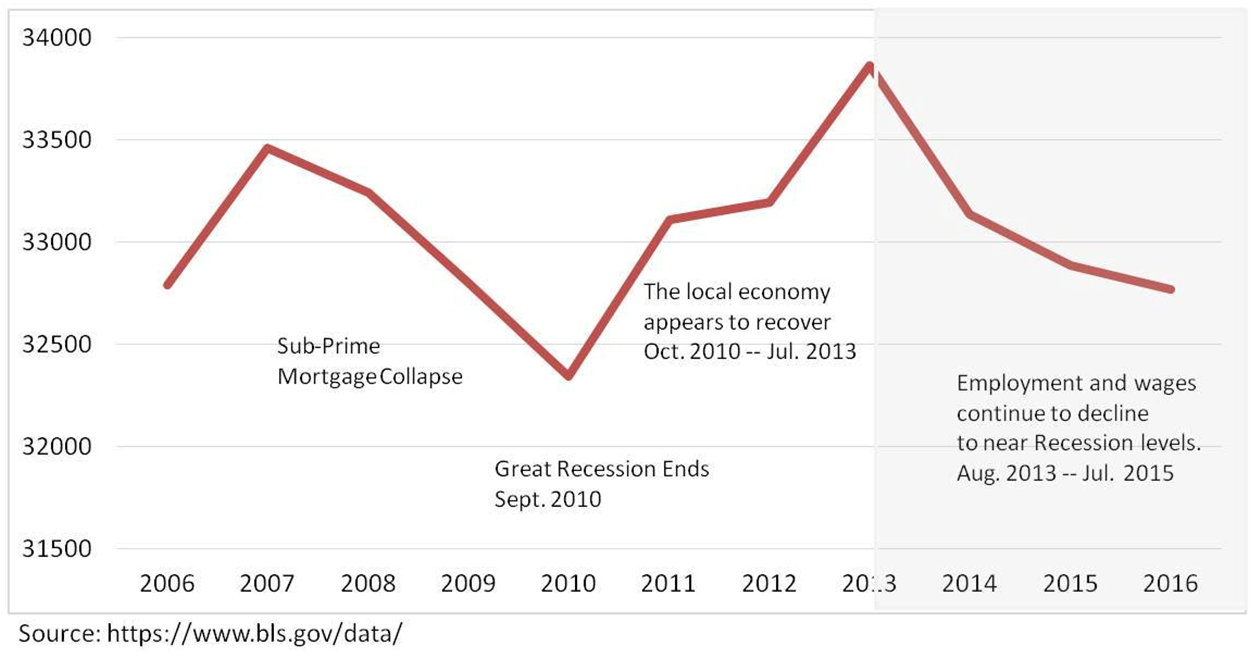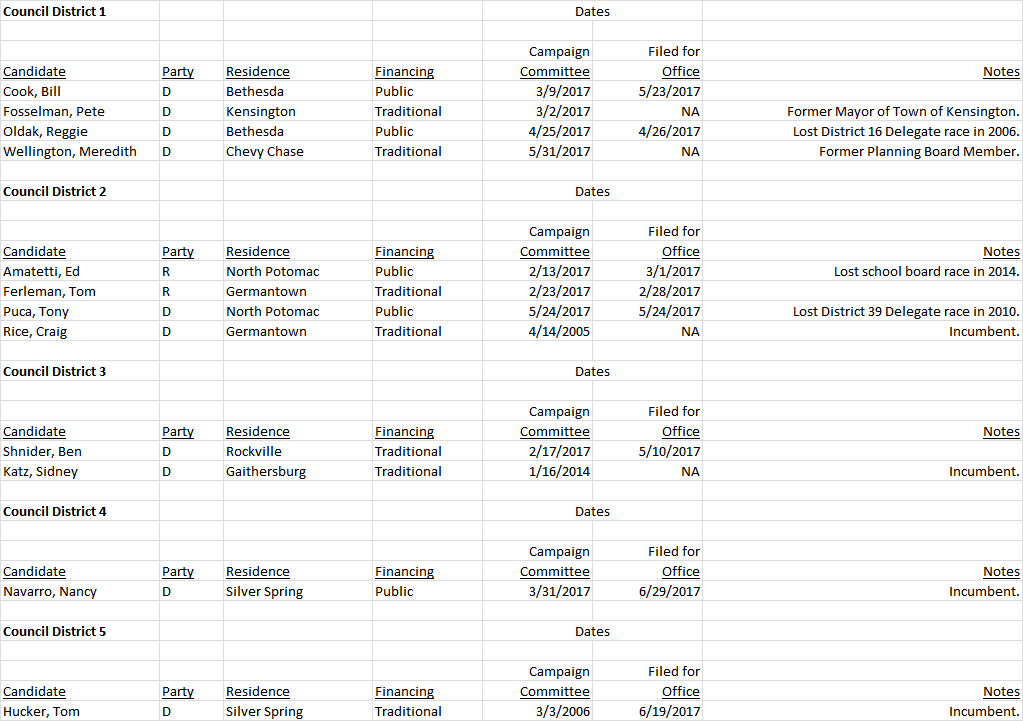By Adam Pagnucco.
Chris Wilhelm is Winning the Sign Wars
MCPS teacher and progressive at-large council candidate Chris Wilhelm has covered parts of Georgia Avenue and University Boulevard with his campaign signs. (It helps to speak Spanish!) Yes, we know signs don’t vote. But it shows that Wilhelm is working and that’s good for perceptions of his campaign.
Who Has Momentum in Council District 1?
Council District 1, which covers Bethesda, Chevy Chase, Potomac, Poolesville and a large part of Kensington, has more regularly voting Democrats and more political contributors than any other council district by far. It’s a prime seat. Right now, there are nine candidates in the race and there might be more on the way. Many good candidates in this district, like Bill Conway, Gabe Albornoz, Emily Shetty, Samir Paul and Sara Love, are instead running for council at-large or the General Assembly. There are lots of openings to choose from these days!
So who has the momentum right now? You could say Delegate Ana Sol Gutierrez, who is the only sitting elected official who is running. Or Reggie Oldak, who has qualified for matching funds in public financing. Former Planning Board Member Meredith Wellington should appeal to land use voters oriented towards Marc Elrich. Former Kensington Mayor Pete Fosselman was just endorsed by former Governor Martin O’Malley.
But we’re going with Andrew Friedson, who just had his kickoff boasting endorsements from his former employer, Comptroller Peter Franchot, along with Senators Brian Feldman (D-15) and Craig Zucker (D-14) and former long-time DNC member Susan Turnbull. Feldman is an old hand in the Potomac portion of the district and has not been seriously challenged in 15 years. Turnbull doesn’t usually play in local races but she has a national network in both the Democratic Party and the Jewish community. If she is all in for Friedson, that’s a big deal. Friedson, who is killing the field in social media, is feeling pumped up right now with good reason.
Where’s Duchy?
It’s unusual to see a large field of MoCo candidates without Duchy Trachtenberg among them. She has a long electoral history, losing a District 1 County Council race in 2002 by a hair, winning an at-large council seat in 2006, losing reelection in 2010, briefly running for Congressional District 6 in 2012 and getting annihilated in a challenge to District 1 council incumbent Roger Berliner in 2014. Now she has a full table of races to pick from, including council at-large, council District 1 and the District 16 General Assembly seats. Say what you will about Duchy – and we’ve said plenty – but she can raise money, she has a network and she has campaign experience. Is she done or is she just waiting to file at the last minute, as she has done before?
Can Greenberger’s Strategy Work?
Former County Council spokesman Neil Greenberger is torching his old bosses, saying they treat voters like ATMs and guaranteeing that if he is elected, there will be no property tax hikes. This is a new strategy for a Democratic council candidate made possible by the 2008 passage of the Ficker amendment, which requires votes from all nine Council Members to go over the property tax charter limit. Furthermore, it’s an unusual strategy from a historical perspective. Most council candidates over the last few decades have emphasized schools, transportation, development (pro or con) and a handful of other left-leaning issues but have not been explicitly anti-tax. That sentiment has mostly come from Republicans.
But two things have changed in Greenberger’s favor. First, the passage of term limits was rooted partly in opposition to last year’s 9% property tax hike. But it wasn’t just the increase alone that annoyed residents. Unlike the 2010 energy tax hike, last year’s property tax increase was not driven by the catastrophic effects of a recession, but was a policy choice by the council that could easily have been much lower. Voters didn’t see the tax hike as truly necessary, which increased their frustration with it.
Second, the number of votes needed to win an at-large seat could be much lower in this cycle than in the past. Over the last four cycles, at-large candidates have needed around 40,000 votes to have a shot at victory. (Incumbent Blair Ewing far exceeded that total in 2002 and still lost.)
That number may no longer hold. No one knows what the turnout will be next year; informed observers disagree about that. But the candidate field will be two to three times larger than in any other recent cycle and only one incumbent is running. That could mean a very fractured electorate yielding a low win threshold and tight margins. That favors candidates with medium-sized but intense bases, whether geographic, demographic or ideological. In Greenberger’s case, if 100,000 Democrats vote, and 30,000 of them are sick of tax hikes, and Greenberger can actually communicate with them, he could win. And so could anyone else who can put together 30,000 votes.






